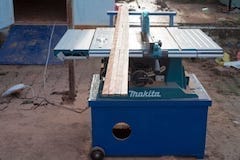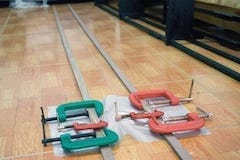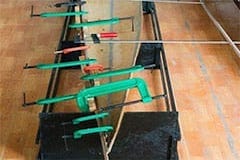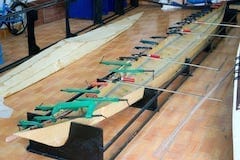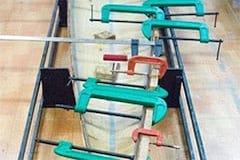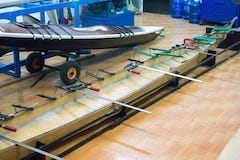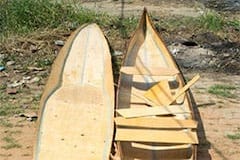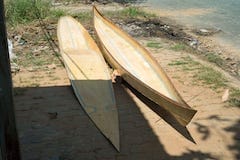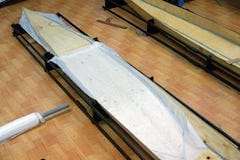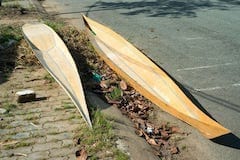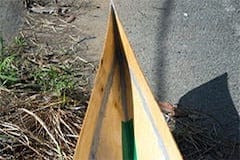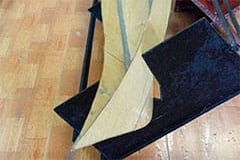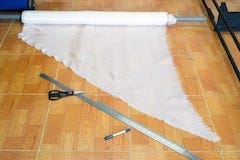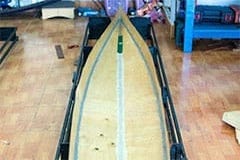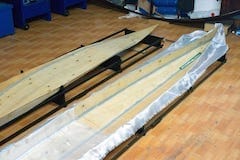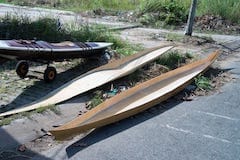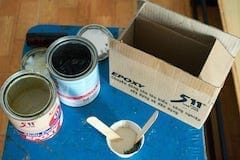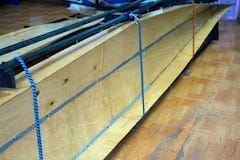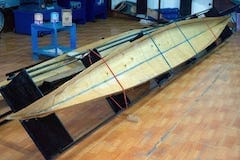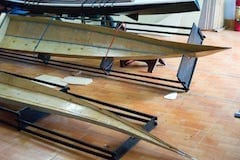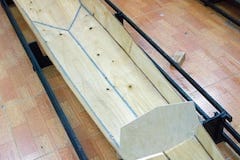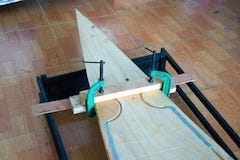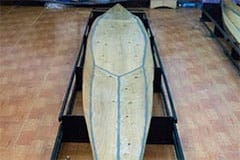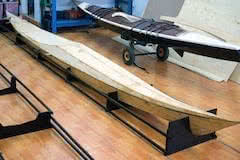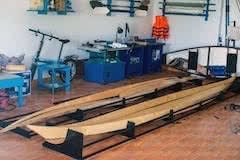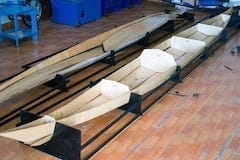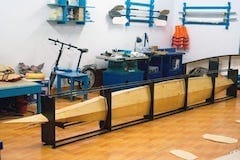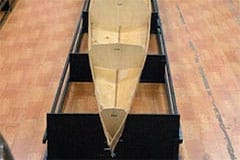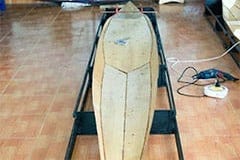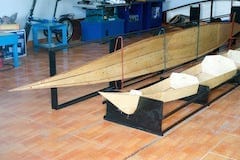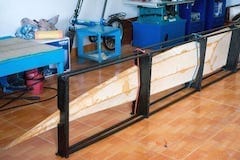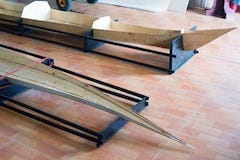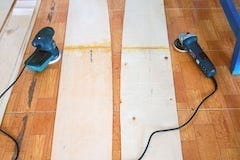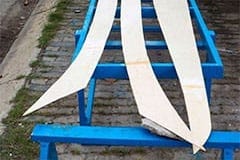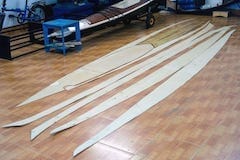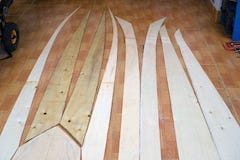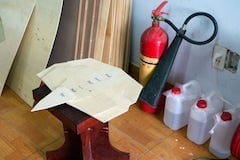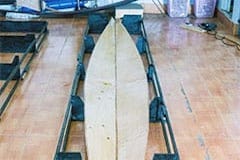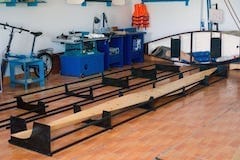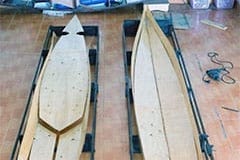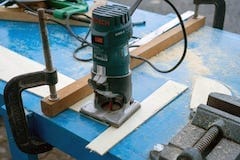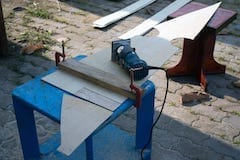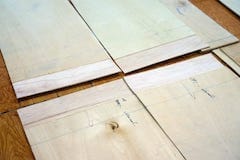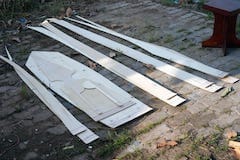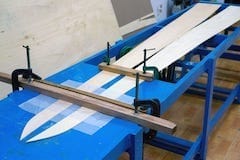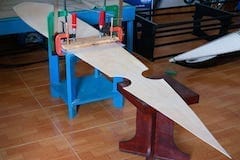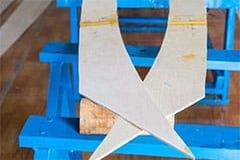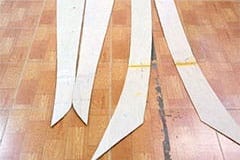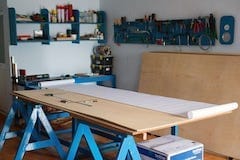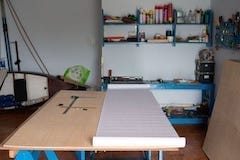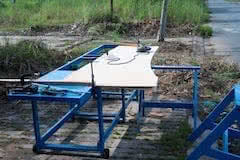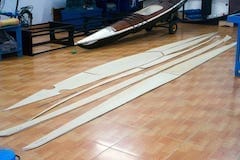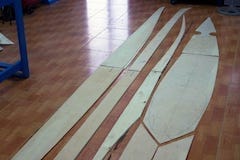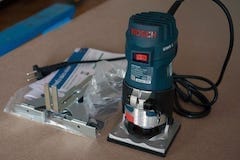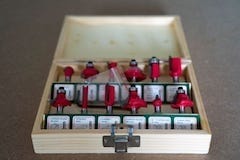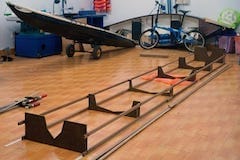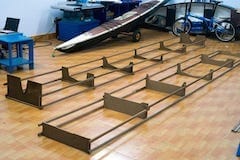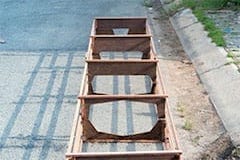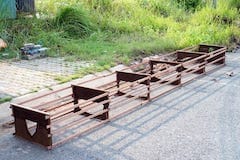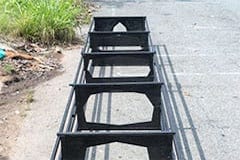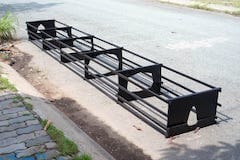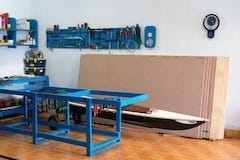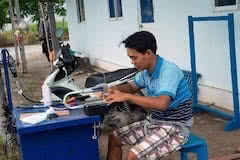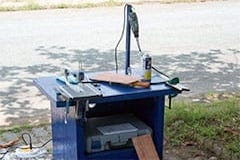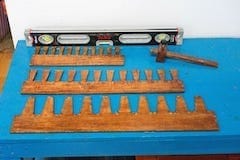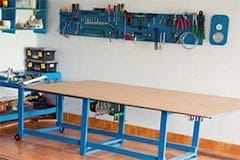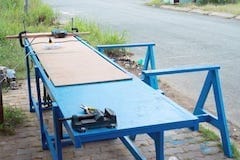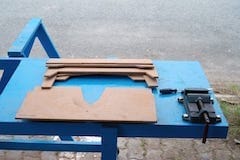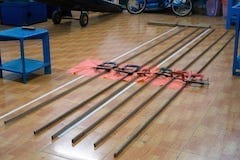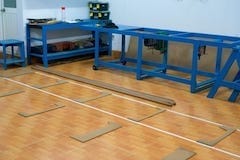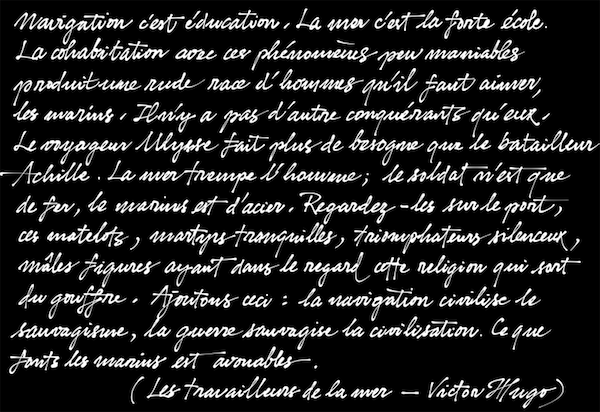Before installing the inwales, I expose the hull and deck into the afternoon tropical sunlight for a few days, for the epoxy to completely hardened. Noticed that for the currently used epoxy, it takes time (several days) for the “amine blush”, a wax like substance, to appear on the surface of the cured epoxy, like drops of dew. I need to wash & brush them with hot water & soap thoroughly, then giving it a slight sanding, then I would be able to install the inwales.
I cut thin wood stripes, 3 m long, 1 cm thick, and join them to the 5.5 m length of the inwales. The inwales just serve to join the hull and deck together, and as a frame to install the deck rigging hardwares later, so they don’t have to be too thick and strong. Next is to bevel the inwales, I used my table saw to make a 45° cut, then split cutting the two ends into halves, for it to easier to bend into the bow & aft curves. Later, I would use the angle grinder to bevel it more precisely.
Next, fitting the two forward and aft permanent bulkheads would stabilize the hull into it final shapes. The plan places the two bulkheads about 1.45 m apart, but my legs are not that long, I decided to reduce the cockpit size to 1.25 m, that is also counted the space reserved for a small bilge pump. It happens that the 3rd temporary bulkhead is approximately at that position, so I just use the temporary bulkhead as the permanent forward bulkhead, plus a newly – cut aft one.
The bulkheads fit well with some minor whetting on the edges, I decided to glass them on one side (the cockpit side) to prevent water leaking through. Having noticed that the curve profiles of the hull and deck (along the gunwales) slightly differ with each other, I’m gonna install some temporary spacing thwarts into the hull, to make it better match with the deck. Those are just temporary and would be removed once the two halves are joined together.

